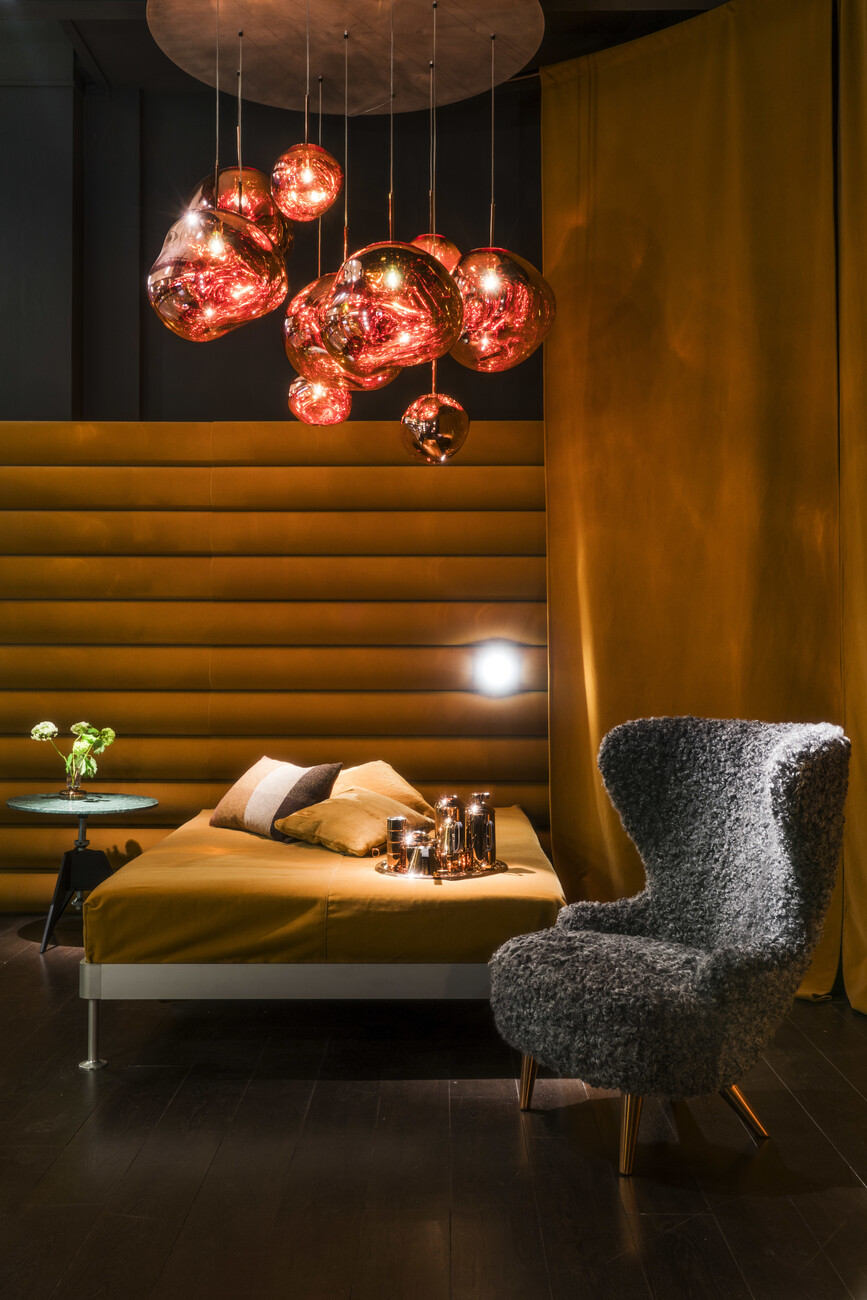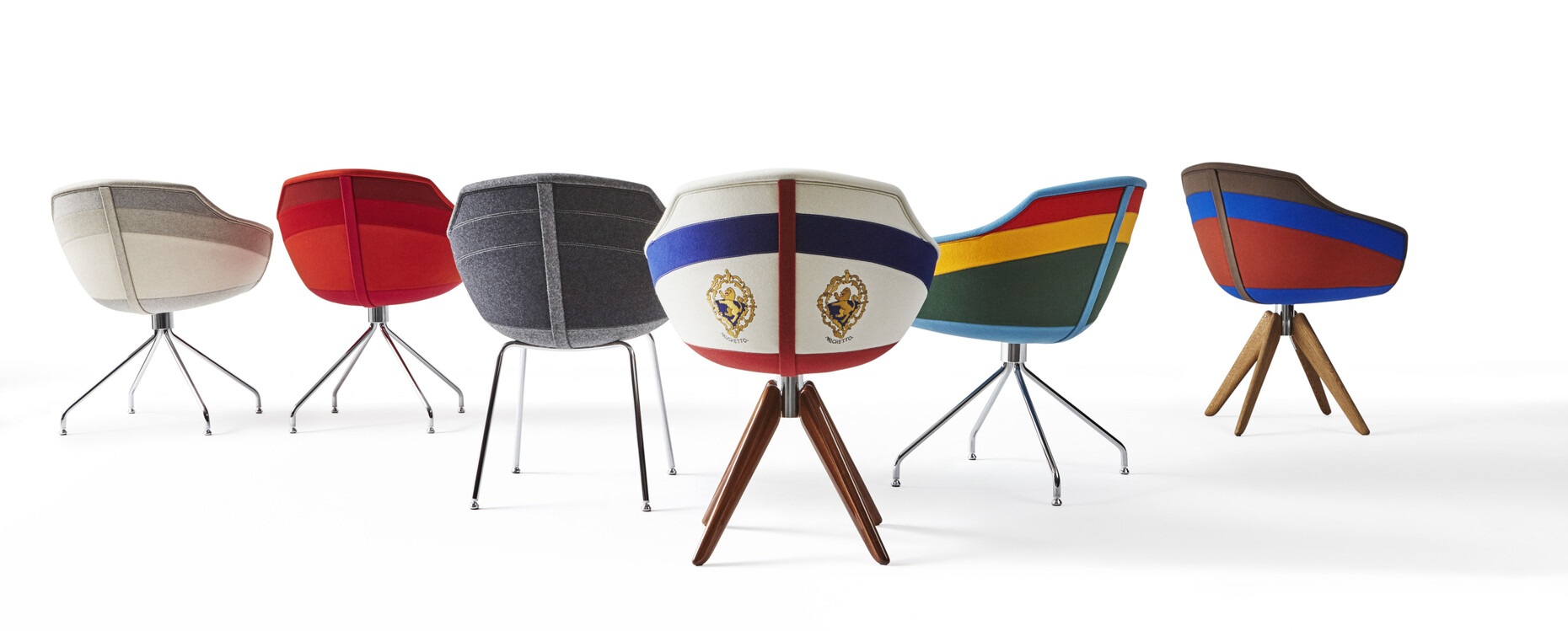SALONE DEL MOBILE 2017
Salone, viewed critically 02: The thirst for luxury and extravagance
Of course, the Salone and Fuorisalone are one huge bubble in which one thing is nowhere to be found: a deficit. Here, simply everything just has to be as effervescent and exuberant as the omnipresent Prosecco. A sober client now enters the parade ground of his residential feel-good islands in a dual role: as a private person and as the temporary inhabitant of public spaces such as lobbies, lounges, restaurants, bars, hotels – and even offices. This may sound obvious, but has long since brought about changes in the range of offerings as an ever increasing number of manufacturers seek to sell furniture that is suitable for as many purposes as possible and can be used in many different areas.
The only exceptions to such market-driven efforts to democratize are the neo-feudal interior fit-out gestures, the desire for luxury cast in copper or brass and served up on marble, all of the dreamed wishes for upward mobility and exclusivity shrouded in beautiful leather and lived out on settees with Chesterfield backstitching. While some may believe the end of the striving for opulence is upon us, having defined many interiors in recent years and mainly evidenced by high-end materials, in the world of the new upper and less upper middle classes it remains as defining as ever. One needs only browse round the choice arrangements from Molteni to Poltrona Frau to see how intrinsically being and semblance have fused into an amalgam of the high-end and the special; after all, nothing turns a better profit that selling illusions and luxury.
On closer inspection, the variants of luxury and exclusivity prove to be far less homogeneous than one might think, and they are (given that essentially it’s all about upgrading strategies), by no means only positioned at the top of the scale of current middle class aspirations, whatever one may take this to mean. The strategies range from more conventional furniture made of especially high-grade materials with exquisite workmanship through to surprising combinations of “high” and “low”.
The scale is certainly open upwards, and there the spectrum extends from a wide choice of different qualities for the leather covers (something almost all makers now offer) through upgraded versions of customary tables or armchairs (by opting for higher-grade materials and finishing) to exquisitely crafted accessories by Hermès, preferred by all those who know they are firmly at the reins of things, or would like to think so and therefore have to conspicuously show it. Located somewhere in-between: the many sofa sets that can evidently never be large enough, can never be covered with enough cushions, and are expected to always remain variable and open to being combined at will with just so many side-tables. What Walter Knoll has long been offering in various high-grade models is also to be found now at Vitra, in the form of the “Grand Sofà” designed by Antonio Citterio as “a kind of ‘island’ for personal activities” – well, you might be tempted to say: as what else?.
On the other hand, the game of upgrading starts quite profanely and without the usual posturing and luxury materials – with Tom Dixon and his cooperation with Ikea, from which the often youthful client often emerges as a highly discerning king who is able to at least decide about the number of backrests and the fabric used for the seating covers. To be fair, it bears saying that for many years now with his collections Tom Dixon (and he’s very British in this regard) has been chiseling away refining a democratizing aesthetic of exclusivity with which many of those can identify for whom the Bauhaus or Danish Modern derivatives do not exude sufficient bar or club feeling. With his Ikea project, Dixon has now without doubt managed to skillfully combine the current sharing culture with an upgrading strategy. By bringing on board 75 students and evaluating their inputs as to all the things a bed could be, Dixon did something that was far more than some ad-genic experiment as the label “Pimp my Ikea bed” might suggest it was. The sofa bed with the aluminum frame named “Delaktig” (which means nothing other than “involved”) presented most elaborately in Milan’s marvelous historical Teatro Manzoni and which goes into mass production in the coming year, leaves little to criticize, especially as it reveals precisely those upgrading mechanisms that can be highlighted if you bring a sharing culture together with a star designer.
So let us return to higher spheres, where sofas becomes boxes whence one views the theater of the world, settees become feel-good islands in the wide oceans of glitz, and carpets become marvelous florally-patterns escapades. No one can stage this better than Marcel Wanders and Moooi – sometimes with exaggerated opulence using giant images of insects, other times ironically, when a Chesterfield sofa on its back mutates into a lounge armchair. And this sits well with the thirst for yacht club luxury: for example, when Luca Nichetto not only decorates the upholstered seat shell of his “Canal Chair” with maritime color combinations, but also adds a special coat of arms for the occasion. After all, luxury and lagoon have always gone hand in glove in Venice.
At the end, one can only assert, somewhat overwhelmed by the dazzle: In the many-layered upper middle class world, such as is to be found in the spoil-you spaces of the comfort glasshouses in the Global North, much is conceivable in terms of luxury and extravagance. The upgrade of the everyday has only just started, even if as a result not every living room necessarily has to look like an English gentleman’s club, a manor house or the saloon car on the Orient Express. There are always alternatives. In an unobserved moment, surrounded by such a surfeit of opulence, you may find yourself recollecting a line from a poem by Wolf Wondratschek that emulates the rhythm of softly murmuring waves: “The world is like a ship, that at some point, when the sunshine is sweet, and the swell runs soft, crashes into a riff, and slowly breaks up.”



























